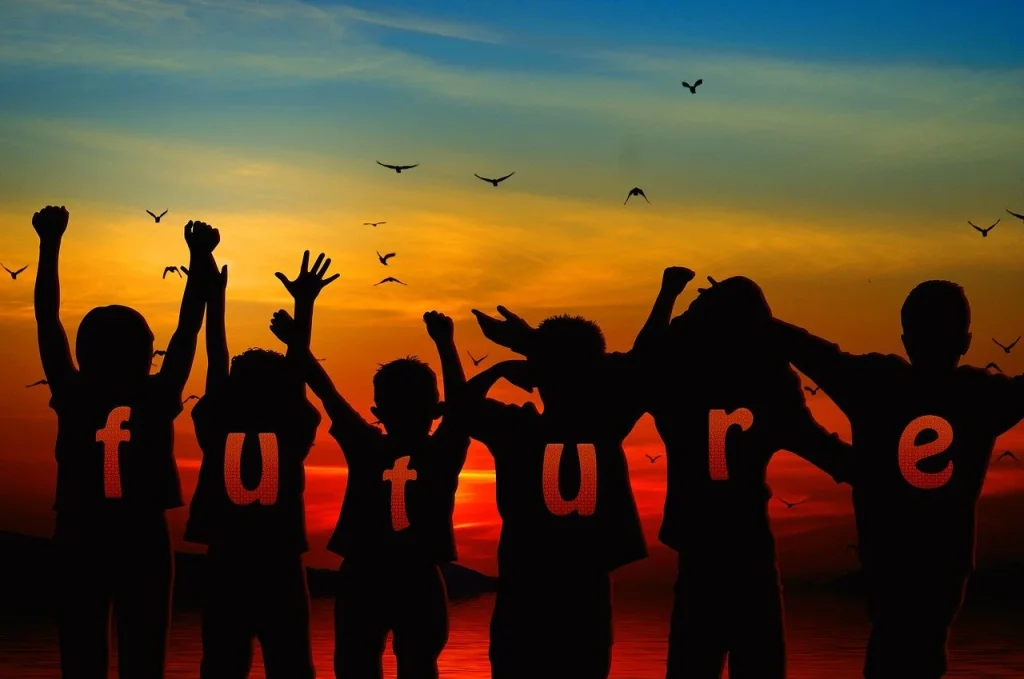
I believe there are few who can confidently provide an immediate answer to the question of why humans exist. While the degree may vary, there isn’t a single person who can live without experiencing hardship. the purpose of human life?” with an unhesitating and immediate answer. There is no one who can live without experiencing pain, regardless of the degree of it.
If I were to ask if it is better to live an easy and enjoyable life, I would say no, because that would not allow us to grow as human beings.
The way we feel happiness differs from person to person.
Everyone lives in search of happiness. We don’t even know what happiness is, but we continue to search for it and live every day.
The clue to happiness is expressed perfectly in the kanji character kou, sachi (幸), which means “happiness.”
As a side note, if you look up the origins of the character for “happiness,” you will find that it is written in hieroglyphics as a figure of a human being handcuffed. It is also said that the punishment of having only the freedom of one’s hands taken away was still a form of happiness.
Is there really such a thing?
It is hard for me to believe that the person who created these characters would have intended them to express the greatest theme of life, which is what we are living for.
If you look at the kanji for “幸” (happiness) and flip it upside down, it remains the same shape as “幸.” While the direction of the central strokes may change slightly, the shape remains the same.


It is a mystery. I wonder why it is the same upside down.
Now try superimposing the character for “幸” and the ground. The Japanese word for 土 means soil. The soil above and the soil below. The soil above the ground can be seen by our eyes, but the soil below the ground cannot be seen.
The two little parts in the middle of kanji 幸 are the boundary of the earth, the topsoil. What lives there, at the interface between the visible world and the invisible world, are the microorganisms that live in the topsoil.
There are two kinds of microorganisms: aerobic and anaerobic.
Focus on microorganisms.
Above the soil is everything we can see,
Under the soil is everything we cannot see.
This means that 幸 “happiness” represents everything in the world, centred around microorganisms.
What you see, what you don’t see, everything.
There are two interpretations of the fact that it is the same upside down.
The first is that what is visible and what is invisible are the same, i.e., one.
This is expressed in the Buddhist Heart Sutra, colour (forms) equals emptiness, emptiness equals colour, forms equals mind, there is only one thing in this world.
The second is the state of balance between the visible and invisible, 陰陽.
This 幸 is where the true meaning of happiness is hidden.
The civilized society in which we live today is called a material civilization, and it is a society that is preoccupied with visible “colours” and neglects the invisible “mind”. Most of the science is based on the assumption that what cannot be seen does not exist. This is why the number of sick people continues to increase despite the development of medical science.
As long as we ignore what we cannot see, there is not a single thing that can be solved by modern science.
Please look around at the current environment we are living in, as well as the immediate surroundings.
We assume that what we cannot see is not there, so we spray pesticides and kill microorganisms in the soil with impunity, without thinking about them.
The air, although invisible, is often overlooked in terms of pollution. Consequently, the air, water, and soil on Earth are heavily polluted. Humans, too, have lost their physical and mental equilibrium and are adrift.
The character for “幸” tells us that this world would not exist without microorganisms.
Humans are both visible physical beings and spiritual beings. We cannot see the mind, but it certainly exists.
We mistakenly believe that if we make a lot of money and obtain more material things than others, we are happy, but happiness does not come from visible material things; it is felt by the mind. We are too much inclined toward the world of visible matter and too much disdain for what we cannot see.
Now let us consider the two in the middle of the character for “幸” centering on the human being called oneself, instead of the microorganisms of aerobic and anaerobic bacteria.
The true self and the ego.
At the center of the visible physical self and the invisible spiritual self are the ego 自我 and the true self 真我. The ego 自我 is the self that thinks of itself as self. The true self 真我 is the real self.
The being that has both the ego and the true-self is truly human.
When the ego and the true-self become themselves and maintain balance, we can overcome the level of the ego-man and manifest our wonderful original human potential.

We can never be happy if we ourselves are out of balance. If the natural environment and society also lose their balance, not only happiness becomes unattainable, but now even the survival of this civilization is in danger.
Will true happiness come if technology continues to advance and if there are inventions and discoveries that we believe will save the world?
No. If there is an imbalance between the visible and the invisible, true happiness for mankind and for individuals will never come.
We need science to pursue what we cannot see. I encourage you to become aware of the microorganisms and your own heart center.
Happiness is happiness even when it is turned upside down. The day will surely come when we will be able to believe that even events that seem unhappy were temporarily necessary in order for us to know what true happiness is.
The kanji character for happiness “幸” tells us exactly these things.